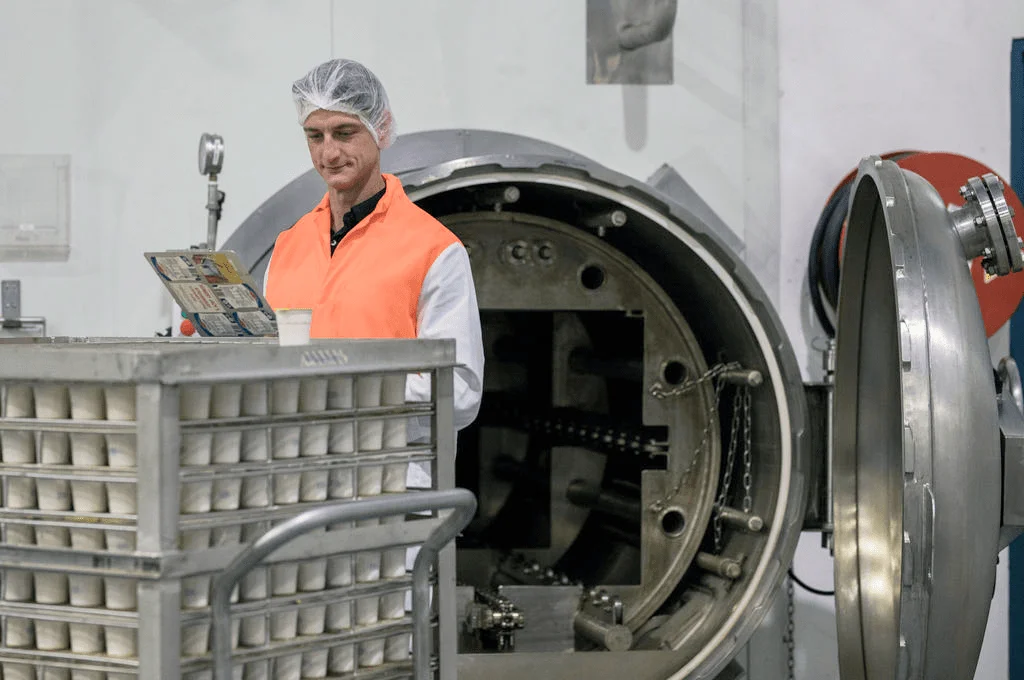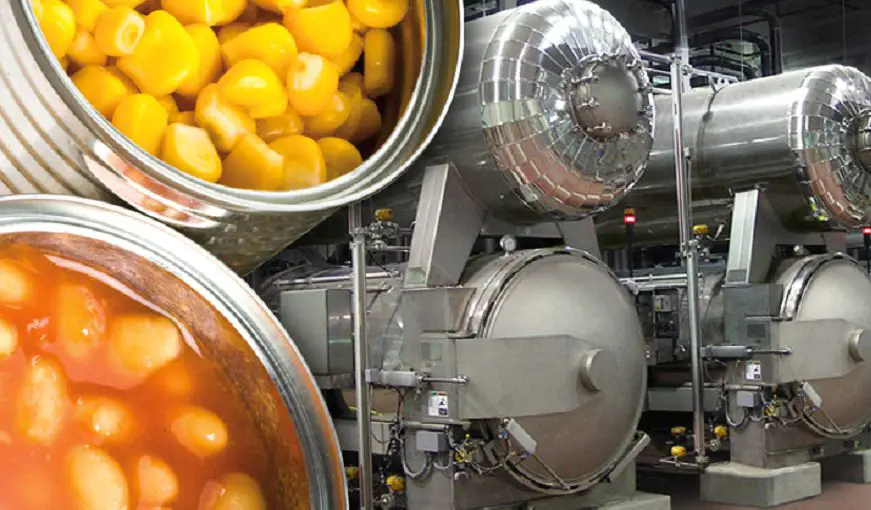Retorting in food processing is a widely used processing technique in the food industry that involves heating food in a sealed container to high temperatures to eliminate harmful microorganisms and extend shelf life. The technique has been around for over a century, and its popularity continues to grow as consumers demand more convenient and ready-to-eat food products. Retorting offers several benefits, including enhanced food safety, improved product quality, and increased production efficiency.
Food processing refers to the transformation of raw ingredients into food products through various physical and chemical processes. This can include techniques such as cooking, canning, freezing, drying, fermenting, and packaging. The goal of food processing is to improve the safety, shelf life, flavor, texture, and nutritional value of food.
Food processing is an essential part of the food industry and plays a significant role in providing consumers with a wide variety of convenient and nutritious food products. It involves many different steps, from sourcing raw materials to delivering finished products to consumers. The methods and technologies used in food processing have evolved over time, and the industry is constantly innovating to improve efficiency, reduce waste, and meet changing consumer demands.
However, some concerns have been raised about the potential negative impacts of food processing on health and the environment. For example, some processing techniques can remove important nutrients from food, and certain additives and preservatives may have negative health effects.
Additionally, food processing can generate waste and pollution, and the production and transportation of processed foods can contribute to greenhouse gas emissions. As such, there is a need for ongoing research and regulation to ensure that food processing is carried out in a safe, sustainable, and responsible manner.
Unlocking the Benefits and Techniques of Retorting in Food Processing

One key benefit of retorting is its ability to preserve the nutritional value and sensory properties of the food. Unlike other processing techniques, such as canning, retorting subjects food to high temperatures for a shorter period, which minimizes nutrient loss and helps maintain the food’s texture, color, and flavor. This is important in meeting the consumers’ increasing demand for healthier and more natural food products.
Bottom up processing psychology plays a critical role in retorting. It involves the processing of information from the raw materials to the final product, taking into account the smallest details that may impact the final product. This type of processing allows manufacturers to produce food products that meet specific customer requirements, such as taste, texture, and nutritional content.
Importance of conflict resolution is also vital in the retorting process. The food industry involves various stakeholders, including suppliers, manufacturers, and retailers, who may have conflicting interests. Conflict resolution techniques, such as mediation and negotiation, can help resolve disputes and ensure that all parties involved in the retorting process work together towards a common goal – producing high-quality and safe food products.
Retorting is an essential food processing technique that offers several benefits, including enhanced food safety, improved product quality, and increased production efficiency. The technique relies on bottom-up processing psychology and requires effective conflict resolution to ensure that all stakeholders work together towards producing safe and healthy food products.
As the demand for convenient and ready-to-eat food products continues to grow, the importance of retorting in the food industry will only increase. Retorting is a versatile processing technique that can be applied to a wide range of food products, including canned foods, pouches, and cartons.
Read Also: The Model of the Earth Project
The process involves subjecting the food product to high temperatures of up to 135°C for a period of time, depending on the product and the desired shelf life. The high temperature and pressure eliminate harmful microorganisms, such as bacteria and viruses, that can cause foodborne illnesses, making the food product safe for consumption.
In addition to its food safety benefits, retorting also helps improve the product quality by extending its shelf life. This means that food manufacturers can produce large batches of food products and store them for an extended period without compromising their quality. This is particularly important in meeting the increasing demand for ready-to-eat food products that have a longer shelf life.
To achieve the best results in retorting, food manufacturers need to use the right equipment and follow specific procedures. The retort machine must be designed to provide even heating and cooling to ensure that the food product is cooked and sterilized evenly. The container used for the retorting process must also be carefully selected to ensure that it can withstand the high temperature and pressure without leaking or deforming.
Furthermore, retorting requires strict quality control measures to ensure that the food product meets the required safety and quality standards. This includes testing the product for microbiological contamination, physical defects, and sensory properties such as taste, texture, and aroma. Food manufacturers must also adhere to food safety regulations and guidelines set by regulatory bodies such as the FDA to ensure that their products are safe for consumption.
Retorting is a valuable food processing technique that offers several benefits to the food industry, including enhanced food safety, improved product quality, and increased production efficiency. The technique relies on the use of specialized equipment, strict quality control measures, and effective conflict resolution to produce safe and healthy food products.
As consumers continue to demand convenient and ready-to-eat food products, retorting will continue to play a critical role in meeting their needs while ensuring food safety and quality. Retorting also provides an opportunity for food manufacturers to expand their product offerings by creating new and innovative food products.
The technique allows manufacturers to combine different ingredients and flavors to create unique and flavorful products that can appeal to a broader consumer base. This can lead to increased sales and profits for food manufacturers.
Another benefit of retorting is its ability to reduce food waste. By extending the shelf life of food products, retorting can help reduce the amount of food that is thrown away due to spoilage. This is particularly important in the food industry, where large quantities of food are produced and wasted each year.
Read Also: Stockton Recycling Inc Leading the Way in Eco-Friendly Waste Management
However, retorting also has its challenges, particularly in terms of its environmental impact. The high temperature and pressure required in the retorting process consume a significant amount of energy, which can contribute to greenhouse gas emissions and climate change.
As such, food manufacturers must explore ways to reduce the environmental impact of the retorting process, such as using renewable energy sources and optimizing the use of resources. Retorting is a valuable food processing technique that offers several benefits to the food industry, including enhanced food safety, improved product quality, increased production efficiency, and reduced food waste.
However, it also has its challenges, particularly in terms of its environmental impact. As such, food manufacturers must continue to innovate and explore new ways to improve the retorting process while minimizing its environmental footprint. By doing so, they can continue to meet the evolving needs of consumers while also promoting sustainability and environmental stewardship.
One area of innovation in retorting is the development of new packaging materials that can withstand the high temperature and pressure required in the retorting process. Traditional packaging materials such as metal cans and glass jars have been the primary containers for retorted food products.
However, these materials are heavy, expensive, and can be challenging to recycle. As such, there is a need for more sustainable and eco-friendly packaging materials that can meet the requirements of retorting. New packaging materials such as pouches made from high-performance polymers and laminates have been developed to address these challenges.
These materials are lightweight, durable, and can be easily customized to meet the specific requirements of different food products. Additionally, they offer several environmental benefits, such as reduced carbon footprint, reduced waste, and improved recyclability.
Another area of innovation is the use of novel processing methods that can reduce the energy consumption and environmental impact of retorting. For instance, microwave-assisted thermal sterilization (MATS) is a new processing technique that combines microwave and thermal energy to sterilize food products.
The technique has been shown to reduce the processing time and energy consumption of retorting, while also improving the sensory properties of the food product. Effective conflict resolution is essential in the retorting process to ensure that all stakeholders work together towards a common goal.
Conflicts can arise due to differences in opinions, goals, and expectations among stakeholders. Effective conflict resolution techniques such as negotiation, mediation, and collaboration can help resolve disputes and create a collaborative and productive working environment.
Retorting is an essential food processing technique that offers several benefits to the food industry. However, there is a need for continuous innovation and improvement to optimize the technique’s benefits while minimizing its environmental impact. Novel packaging materials, processing methods, and effective conflict resolution are essential for achieving these goals and ensuring the sustainability and long-term viability of the food industry.
Read Also: Understanding Collision Insurance: What You Need to Know

